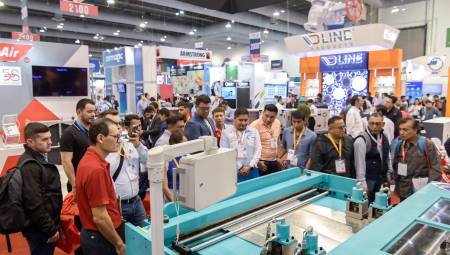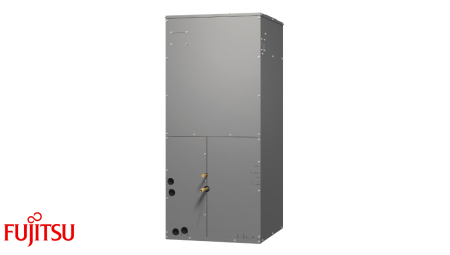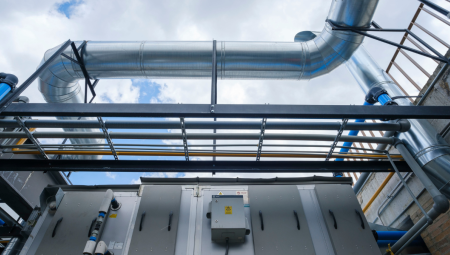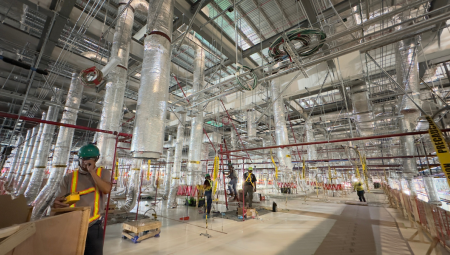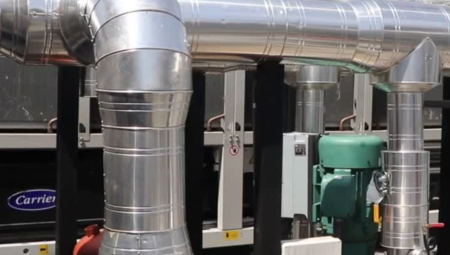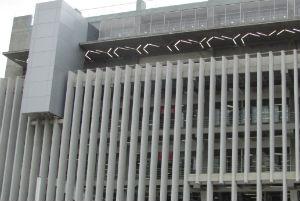 Natural ventilation continues to be an issue that generates controversy within the sector, as there are many professionals who agree or disagree with this type of project.
Natural ventilation continues to be an issue that generates controversy within the sector, as there are many professionals who agree or disagree with this type of project.
by Camilo Botero*
In some previous articles, published in the journal ACR Latinoamérica, he commented that there was a difference in approach, sometimes conflicting, between: "The Ecological Engineer vs. The Bioclimatic Architect". Especially in what has to do with the subject to achieve comfort conditions in hot and humid climates, as happens in many places in the tropical zone, and delimited based on thermodynamic laws, how far bioclimatic architects could go in the control of temperature and relative humidity.
There is, however, a point of confluence at which the two approaches can coincide and in fact there is no theoretical conflict or violation of the second law of thermodynamics, and sometimes convenient solutions are obtained... that point of confluence can be the "Natural Ventilation", which consists of achieving reasonably acceptable conditions for certain applications, (mainly of an industrial type) or when the climate and the environment in inhabited environments of a commercial, institutional and/or domestic type allow it.
Natural ventilation is based on taking outside air, (sometimes filtered) and taking it inside to remove the sensitive load, but little or nothing serves to remove latent load, because, in itself, in the climates reason for this article the air has a high specific humidity (typically 130 grains / lb a.s. - 18.6 grams / Kg a.s. or more - in my region ), when according to the ASHRAE standard 55, which defines the comfort conditions, it should be achieved inside to obtain comfort, a lower value, such as of the order of 70 grains / lb a.s. (10 grams / Kg a.s.), therefore this type of air conditioning by natural convection does not contribute anything to the solution of the lack of comfort, by high specific humidity in the environment.
It is necessary and indispensable to know in detail the internal sensitive loads and the local climatology. The equation with which the air flow is calculated is very simple.
Sensible heat = A constant x the air flow x an acceptable delta of T.
To illustrate this mathematical model in the IP system, the following is the equation at 1,000 meters above sea level:
q = CFM x Delta of T
Clearing the temperature differential of this equation, one has to:
Delta of T = q / CFM
Here a technical-economic decision is reached, because either the Delta of T is fixed (typically 4 °F or 2 °C), calculating the CFMs or the CFMs are fixed, for example by defining the number of changes per hour and the change in maximum permissible temperature is calculated, but in any case that value is incremental, that is, if the temperature outside is 30 °C, and the Delta of T is 2 °C, the interior. even when a high amount of air is breathed, it is of the order of 32 °C, which is totally outside the comfort standard.
But the final effect does not end here. The feeling of comfort is achieved through a combination of the following factors.
- Dry bulb temperature.
- Wet bulb temperature.
- Air velocity over the occupant's body.
- Type of clothing used.
- Balance of mass and energy in the individual.
Normally, flows are so large that they make projects unreliable, but if the air flows achieved by natural convection are located, in areas of low density of sensitive load, acceptable results are achieved with the minimum of energy consumption.
Natural ventilation
The ways to heat by means of natural ventilation are mainly by means of two mechanisms:
- The winds in each zone: they must be known in intensity, direction and frequency, as well as their schedules. In my opinion this system is very uncertain, since it can not be controlled and depends fundamentally on the climate, however, it can not be ruled out and today it is used profusely, however, it generally has no filtration or so the infiltration of dust and other pollutants can be a major problem.
This system also has no way of carrying the latent load and therefore has no control over the relative humidity (and of course not over the specific humidity).
To take advantage of the winds, architecturally openings are left in the buildings that sometimes constitute a problem when it rains and the winds flood the occupied areas.
Natural convection: this is presented as a consequence of the pressure differential generated by the difference in density between the higher density of air outside and the lower density of air inside the inhabited enclosure.
It is quite complicated to calculate this pressure differential because the temperatures are not constant inside or outside, and result in a few millimeters of water column, which makes it very difficult to use filtration, because the pressure drop through the filter cancels the effect of the thermosyphon that produces the pressure differential.
Conclusions
1. Yes, it is possible to use natural ventilation, as long as the possibilities to achieve "comfort" from this technology are very clear. I have often heard something like "We spent a fortune adapting the building for this natural ventilation and we did not achieve at best but 28 ° C, when we expected 24 ° C!".
What they do not add is that to achieve 24 ° C, the investment was considerably higher if the necessary mechanical equipment was used to reach the levels of temperature and relative humidity that provide comfort conditions; the energy consumption 10 (or more) times higher and that if they did not have natural ventilation instead of 28 °C, the temperature would be 34 °C, which is why the natural ventilation project was made.
2. The weather and winds in each region must be known very well for a specific application, know the profile of peak hours of sensitive load inside the area that you want to ventilate naturally and keep in mind the levels of noise and dust outside the inhabited environment.
3. Make one or more psychromometries where the day and night weather appears for several months of the year and the conditions that would be obtained for the sensitive thermal load in the area; in order to make a model of system behavior on different days of the year and times of day.
4. Leave a document signed by the owner and / or manager of the project where it was perfectly established what will be the approximate conditions of temperature, relative humidity, indoor air quality and possible apparent temperature in people, with which the bioclimatic design with natural ventilations would be compromised, hopefully guaranteed by compliance policies.
* Camilo Botero is the current Secretary of the Federation of Ibero-American Associations of Air Conditioning and Refrigeration - FAIAR; he was president of ACAIRE and is president of Camilo Botero Ingenieros Consultores Ltda. He has worked as a teacher in several Colombian universities, guilds and currently in ACAIRE in diploma courses of air conditioning projects, energy efficiency in air conditioning and refrigeration, cogeneration and trigeneration, applied psychometrics, thermodynamics, fluid mechanics, heat transfer and turbomachinery. ([email protected]).







